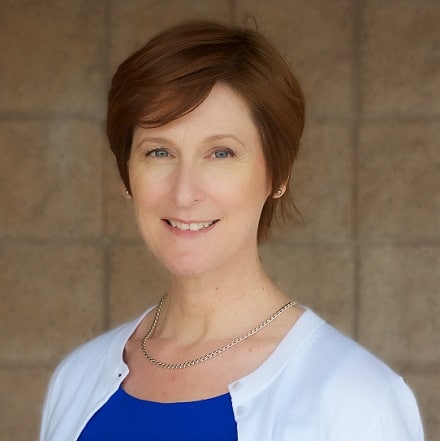Inside Angle
From 3M Health Information Systems
The seven habits of highly successful care programs—and six examples
Last month, David Blumenthal, MD, director of The Commonwealth Fund, addressed a 3M conference in New York City on value-based care. He mentioned soon-to-be-released recommendations from his organization on effective models for healthcare improvement.
What he didn’t say was that the recommendations would be accompanied by a media crusade. In the past several weeks, The Commonwealth Fund has released a range of multi-media content advocating new models of care.
Seven Attributes
It turns out that all the fanfare is worth the fuss. At the core is an issue brief titled “Models of Care for High-Need, High-Cost Patients.” It identifies the attributes of successful programs caring for complex patients. It is an important summary—likely to become akin to “The Seven Habits of Highly Successful Care Programs”—because it describes what made the difference for successful programs:
- Target patients who are likely to benefit from intervention
- Comprehensively assess patients’ risks and needs
- Rely on evidence-based care planning and patient monitoring
- Engage patients and family to help care for themselves
- Coordinate care and communication among patients and providers
- Facilitate transitions from the hospital and referrals to community resources
- Provide appropriate care in line with the patients’ preferences
As important as the list of seven attributes, the brief also addresses the challenges of applying what works well in one program to other programs in different settings. It outlines how to scale projects and points out the barriers to achieving sustainability.
Although the issue brief is probably the most “durable” piece, the other new multi-media content is worthwhile, too. In fact, whatever your preference for consuming information, The Commonwealth Fund has packaged it up and served it:
- Several posts on The Commonwealth Fund blog support the argument for new models of care. “Fostering a high-performance health system for the sickest and frailest” describes six principles for improving value for patients and health systems.
- Their YouTube channel hosts the “Doing Healthcare Differently” video series. If you ever watched the Kaiser Family Foundation’s YouToons or read Jonathan Gruber’s graphic novel called Health Care Reform, you need to see how The Commonwealth Fund goes mainstream.
- The website offers a multi-media article with embedded video and infographics. The content ranges from personal stories to academic reviews.
Six Examples
The materials from The Commonwealth Fund are part of a very smart content marketing campaign. But that’s not why they caught my eye. I was attracted by their consistency with the experiences related by 3M clients. At the same New York City conference where Dr. Blumenthal spoke, Mark Sonneborn, vice president of information services for the Minnesota Hospital Association, described how member hospitals are succeeding with value-based care. His examples illustrate many of the attributes identified by The Commonwealth Fund.
Big data. At the leading edge of value-based care are hospitals segmenting their patient populations and applying predictive analytics. “This is straight population health,” said Mr. Sonneborn. “You find the high utilizers, the one percent that causes 25, 30, 50 percent of the cost. If you can get someone who is using the emergency room twenty-five times a year down to twenty, that’s a bigger bang than going after the low utilizers.”
Community relationships. In a suburb of the Twin Cities, the fire department found a number of ambulance calls were for elderly patients that were recently discharged from the hospital. The fire department collaborated with the local hospital to set up an intervention program to visit patients at home before they might make an emergency call. Hospital patients signed a confidentiality release to let the fire department see their records, and now the fire department makes visits to elderly patients after discharge. The emergency personnel follow up just as a home health nurse or health coach might do. The service is not reimbursed, so it helps the hospital reduce costs, avoidable ED visits and readmissions. It helps the fire department build better community relationships.
Assertive care management. Mr. Sonneborn described a variety of programs that change the way hospitals deliver care. One health system uses predictive analytics to find patients at risk for medication problems. Then they arrange home visits to those patients after discharge. “They’ve seen a return on that,” according to Mr. Sonneborn. “Patients haven’t been returning to the emergency room as much.”
Some hospitals, especially those in the inner city, are using social workers embedded in the ED to take care of non-medical needs, such as food and transportation. The Hennepin County Medical Center operates a Therapeutic Food Pharmacy out of its hospital and clinics to provide nutritious food packages to low-income clients. It also staffs the ED with volunteers and lower-wage personnel to help patients with non-emergent conditions get to an urgent care center, rather than use more expensive ED resources.
Post-acute transitional care. Several critical access hospitals in Minnesota invested in swing beds for long-term care. According to Mr. Sonneborn, in the fee-for-service world, that was really wise decision. In the capitated or risk-based environment, it’s a really bad move as payers try to reduce hospital utilization. This could have dried up an important source of revenue. However, the communities these hospitals serve had an unmet need for care coordination and local follow-up services as patients were discharged from referring acute-care hospitals. By redeploying their capacity for post-acute transitional care, the critical access hospitals helped the health system reduce Medicare bed days and hospital readmission rates, while maintaining their revenue stream.
Patient-centered longitudinal care. Some organizations are changing their structure altogether to allow better leadership across settings of care. One organization, for example, designated a chief nursing officer who is responsible for both hospital and ambulatory care.
Population segmentation. The dominant healthcare system in one county had been working with their public health department for years to reduce smoking, without much impact. They turned to their electronic medical record, which captured whether patients were smokers or not. The first thing they learned was that two out of three smokers in their database were women. Segmented by age, they discovered that the majority of the women were under fifty. Segmented by socio-economic markers, they found that most of the women were working professionals. In fact, many of them worked for their own health system. Aha! It led to a targeted smoking cessation program with the employees, improving their health while helping the system keep their fee-for-service costs down.
To read more about healthcare improvement in Minnesota, see the white paper on new metrics for population health.
Kristine Daynes is marketing manager for payer and regulatory markets at 3M Health Information Systems.


